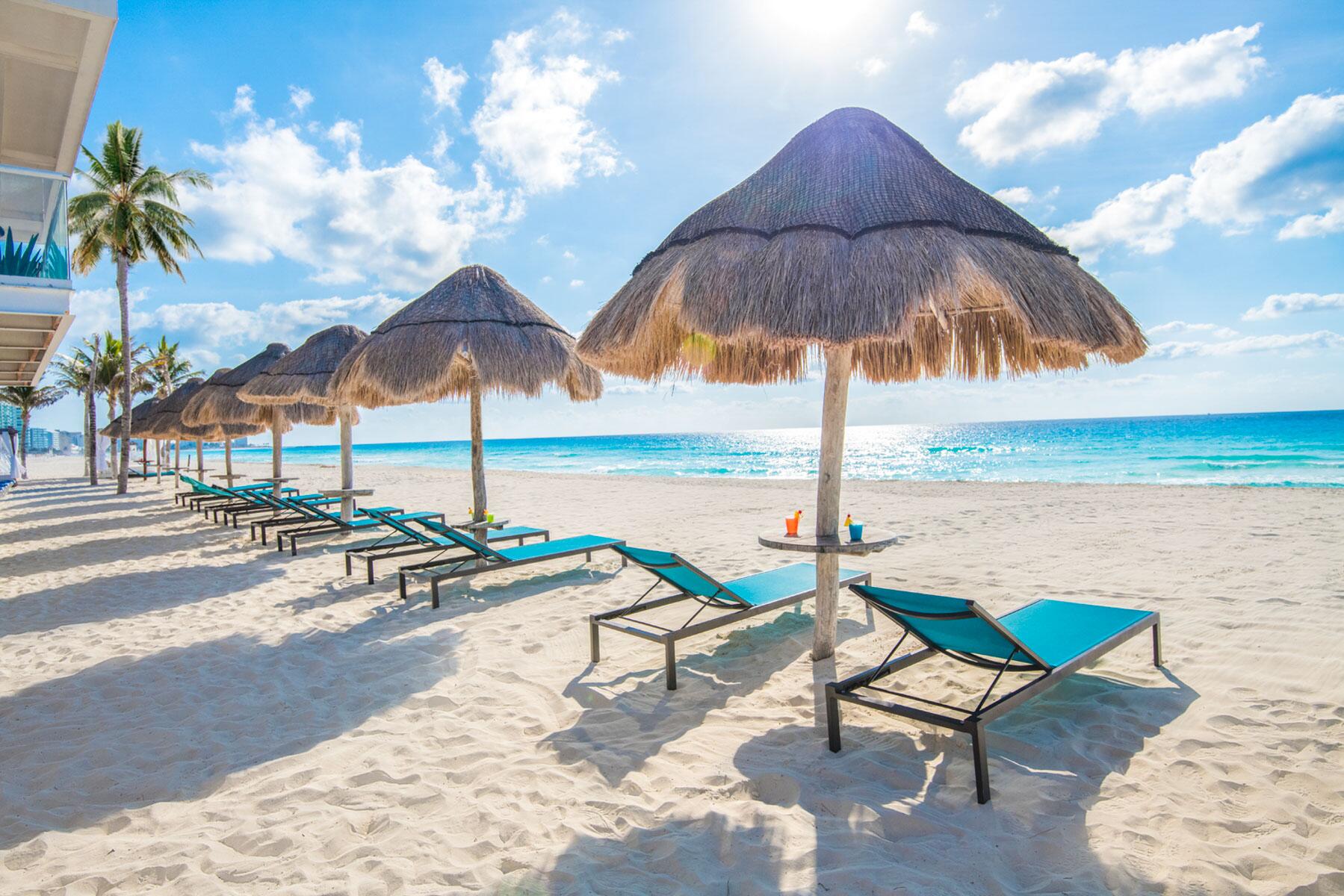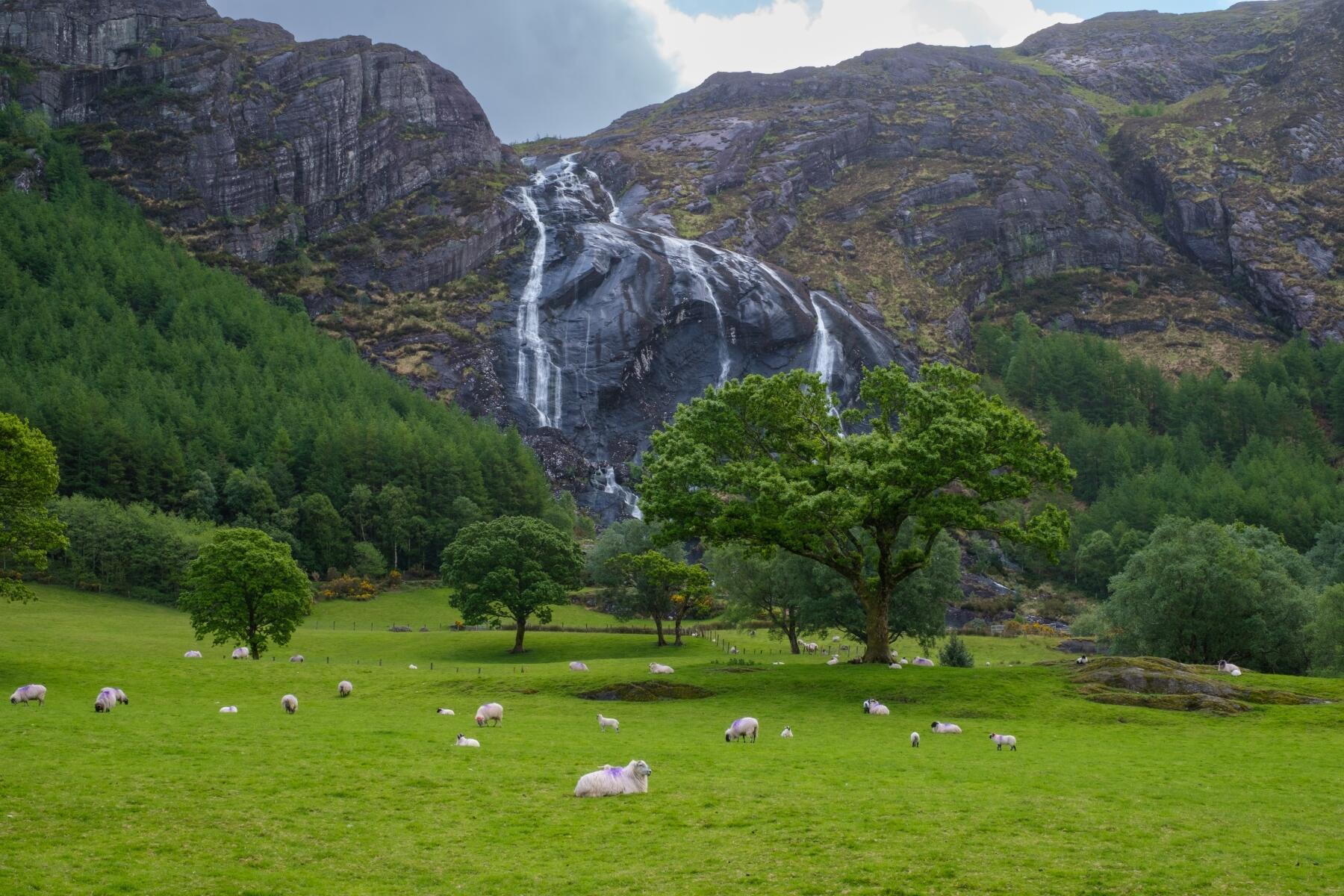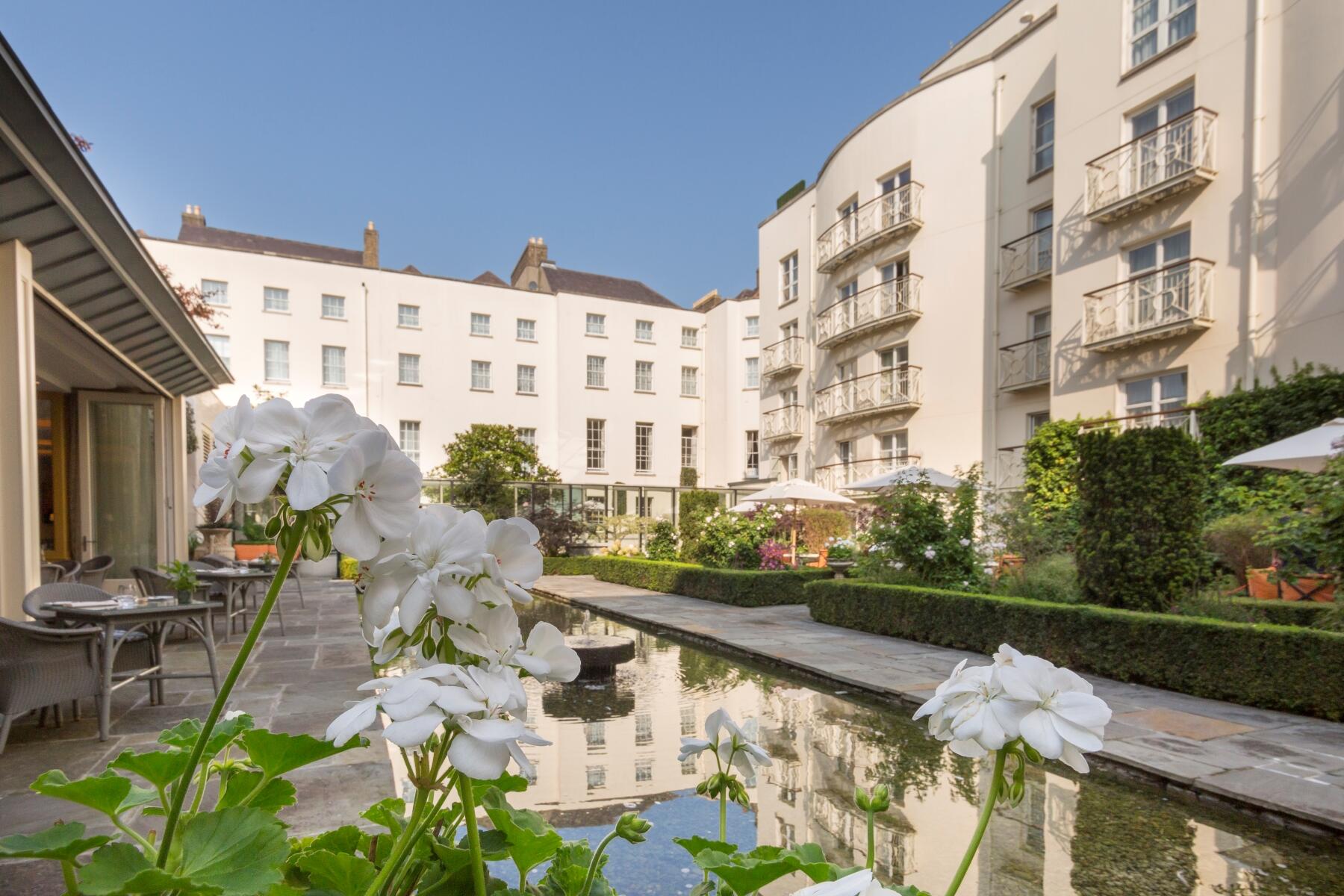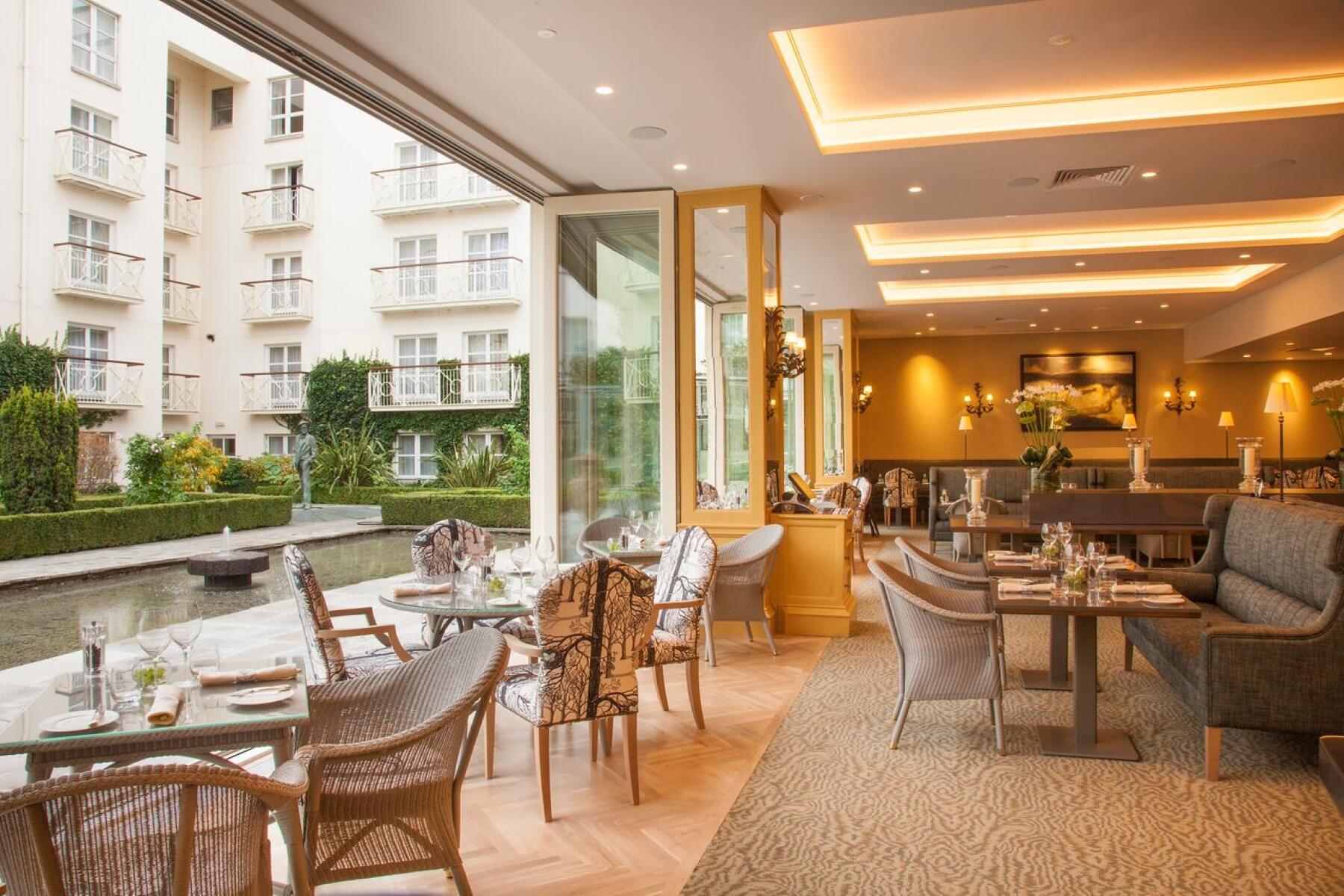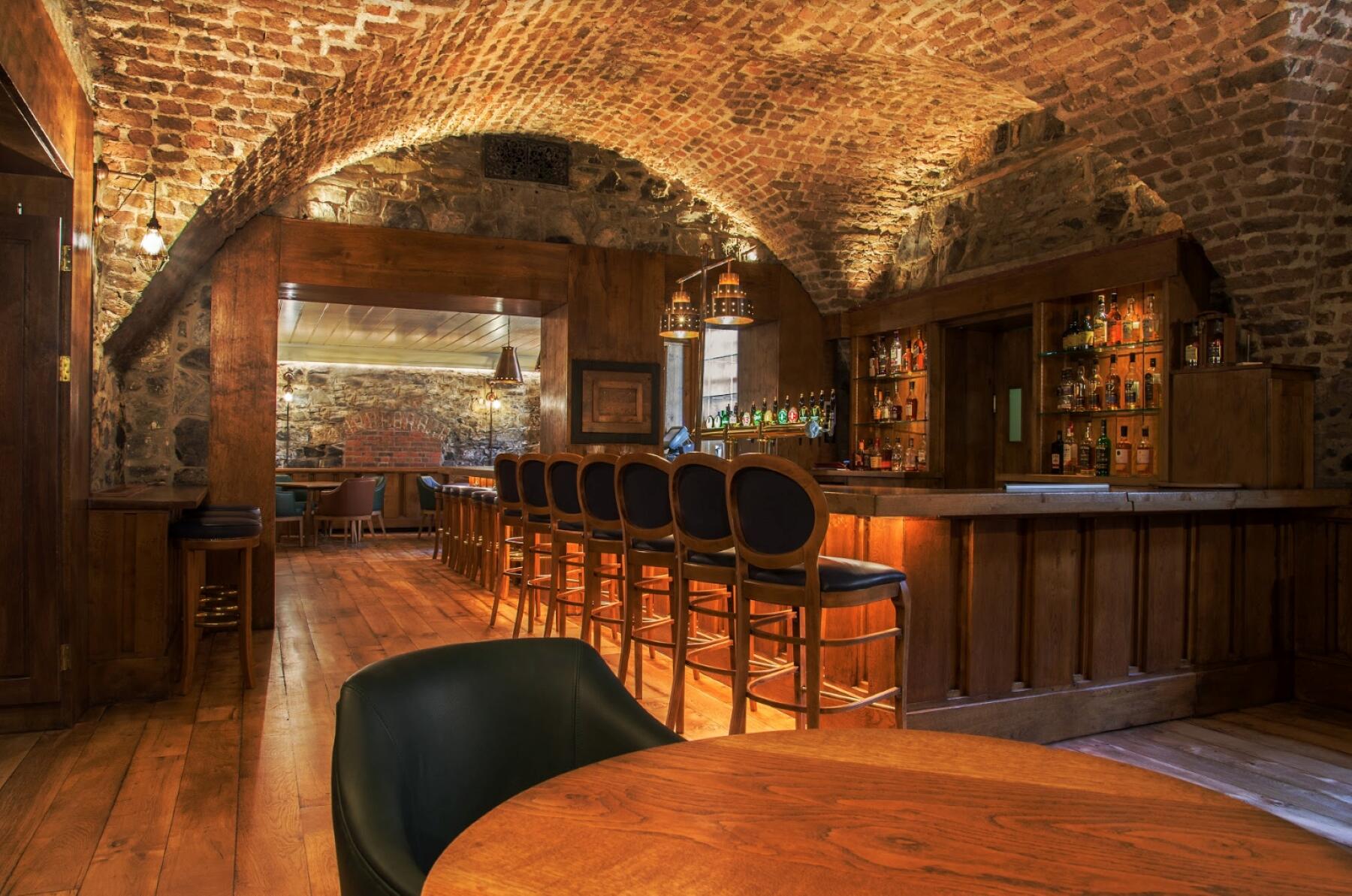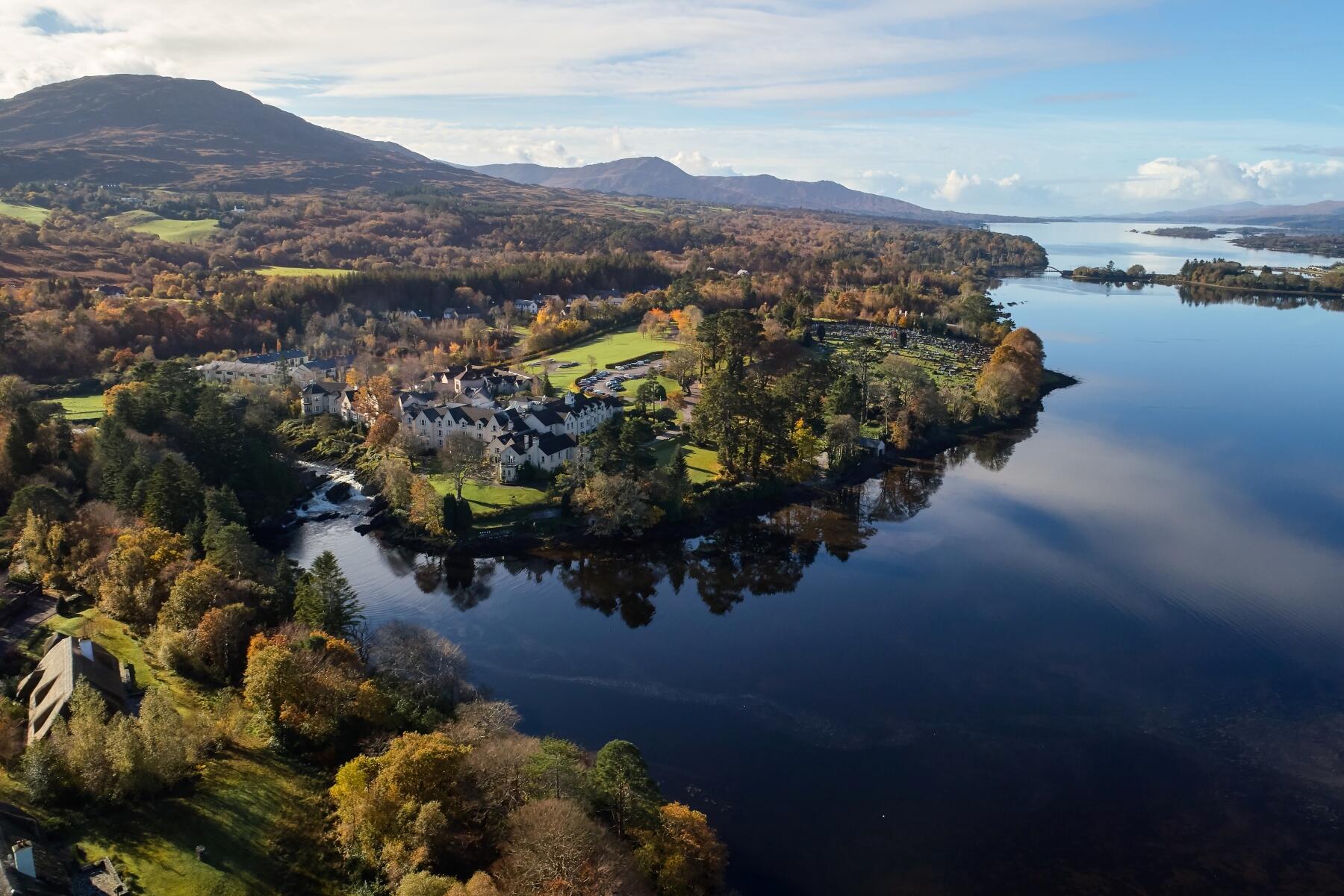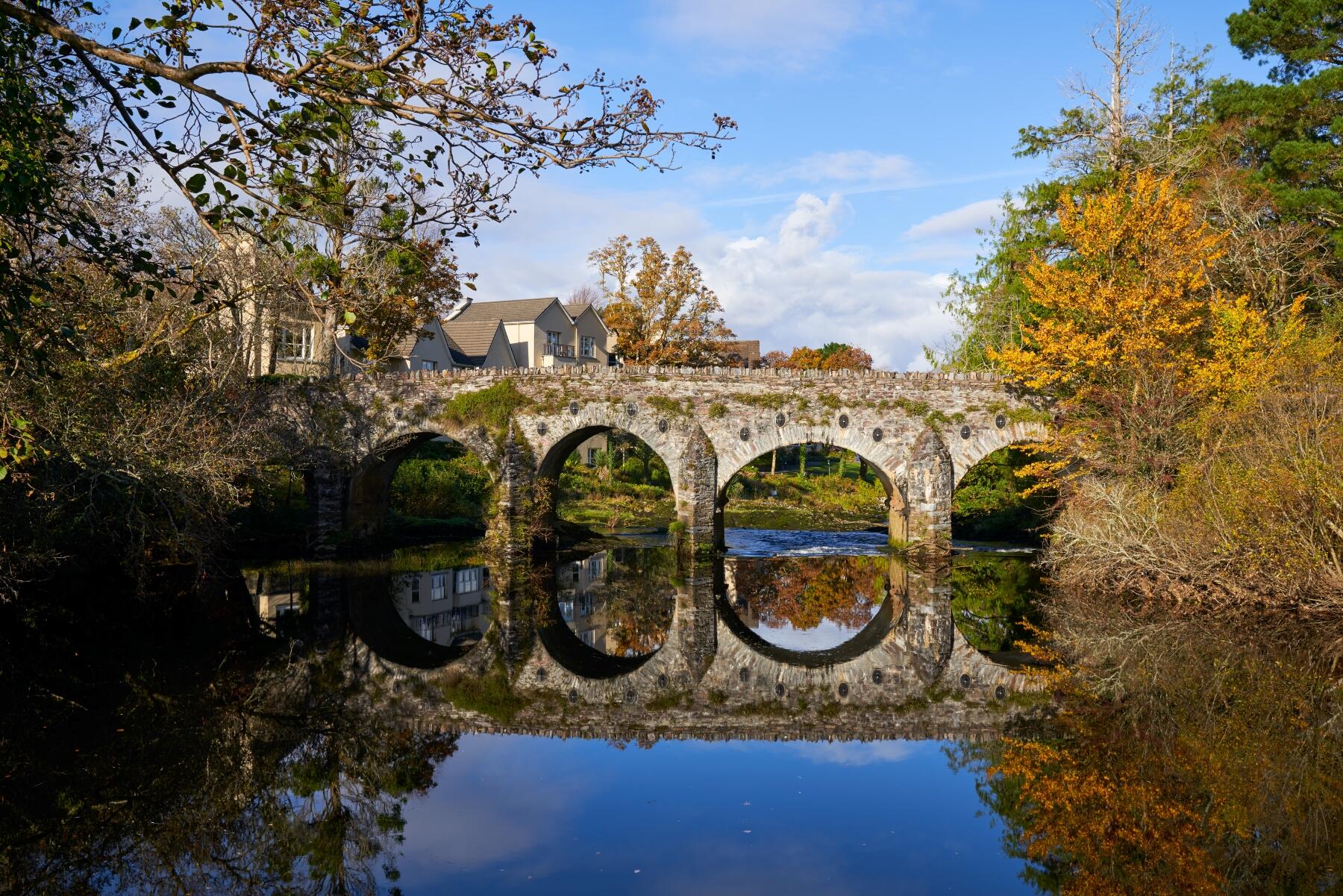Go back in time and relax in bucolic Irish luxury.
I could have ordered the Oval’s Guinness Bangers and Mash, or something called a Craic Ball (apparently a fried roll-up of ham, mustard, and panko crumbs). But frankly, I was pretty happy with the lovely pre-Victorian pub’s “World Famous Irish Stew,” a substantial helping of lamb shoulder and root vegetables bobbing about in salty broth, and what the Oval describes as “the best pint of Guinness in Dublin,” a claim as impossible to prove as it is to refute.
Music from a trio playing Irish bagpipes, fiddle, and guitar drifted up the stairwell, which ascends from the Oval’s ground floor of leather-topped bar stools and elaborately carved dark wood along a wrought-iron banister scrolled in the shape of gilded harps. The whole set-up is as comfortable as a well-worn brogan, but even here, as in much of Dublin, you don’t have to look far for reminders that things have not always been so convivial.
There is, for example, the sign above the Oval’s bar commemorating both the pub’s opening in 1822 and its reconstruction after the 1916 Easter Rising, when the Oval and the nearby General Post Office—the Rising’s headquarters—were shelled into ruin by a British warship in the River Liffey.
The History tab on the pub’s website features a few other happenstances that probably don’t pop up at your local TGI Friday’s–famine, hidden plots, “savage fighting,” civil war, and being “engulfed in flames.” As I stepped out of the pub into Middle Abbey Street on a recent evening, this painful past both faded and lingered awhile, like the melancholy strains of the house band’s “She Moved Through the Fair” that followed me out.
Recommended Fodor’s Video
The Merrion Hotel on Upper Merrion Street, where I was a guest, presented a different face of Dublin entirely. The serene, upscale hotel is steeped in history in its own right, having been assembled from a row of four grand 18th-century townhouses, including No. 24, where the Duke of Wellington is said to have been born in 1769.
But the feeling at the Merrion is very much Dublin 2023: the forward-looking, spruced-up capital of what has become, astonishingly, the second wealthiest nation (of 27!) in the European Union. It is a place where some of the luxurious touches are immediately apparent, like the big, bright, high-ceilinged public rooms whose upholstered chairs accommodate well-groomed, well-heeled guests unfolding a newspaper, say, or taking the Merrion’s version of afternoon tea. The ritual here comes with a twist: This is an “Art Tea,” with various chocolates imprinted with designs borrowed from the hotel’s impressive collection of modern art, worth a long afternoon’s browse all on its own.
Other touches are less immediately obvious, from the beehives on the roof (their honeycombs appear on the breakfast buffet table) to the warren of stone and brick-arched cellar rooms below with a bustling pub and wine rooms. Then there were the Merrion’s small—or really not-so-small—personal touches. Leave eyeglasses on your bed table and return to find them folded on an eyeglass cloth; leave a phone charger and return to find it coiled and secured in a velcro strap. Most memorably, I had arrived with a twisted ankle, and by the afternoon, seemingly every staff member in the hotel was asking what they could do to help, including one who ran out as I was leaving Dublin with a bag of ice for the van ride.
What is outside the Merrion is pretty wonderful, too; the hotel is situated in a neighborhood of lovely parks, from St. Stephen’s Green to Merrion Square, with its statue of a languid Oscar Wilde eying his childhood home across the street. The neighborhood’s nearby attractions include The National Gallery, the MoLI literary museum, Trinity College, and the unmissable gem of Sweny’s Pharmacy, which has given up dispensing remedies to focus on reverence for—and multi-language readings of—James Joyce. All serve as reminders that Eire, with an island-wide population smaller than metro Houston’s, has produced an epic, world-culture-shifting roster of writers, actors, musicians, saints (10!), and the ancestors of many, many American presidents.
Ireland, in fact, claims 23 U.S. chief executives, from Andrew Jackson to Joe Biden, including another recent POTUS, as I learned from stopping in at the Barack Obama Plaza, a rest area on the M7 Motorway near Moneygall. The somewhat surreal roadside attraction, opened by Obama himself on a presidential visit, features life-size bronze statues of Barack and Michelle waving out front, racks of cheesy Obama (and Reagan) souvenirs, and a museum upstairs with the banner quote, “There’s no one as Irish as Barack O’Bama!” spoken by the man himself.

Not far down the road, heading southwest, the level topography gives way to green foothills. As you pass road signs for places like Tralee, Dingle, and MacGillcuddy’s Reeks, you find yourself suddenly amid dramatic mountains that run down to deep cleft valleys inland and seemingly straight into the glittering, fjord-like bays and peninsulas of the counties of Kerry and Cork.
We came at last to Sheen Falls Lodge, a Relais & Chateaux luxury hotel perched between the gentle cataract that gives the place its name, and Kenmare Bay, with the picture-postcard town of Kenmare itself across the estuary. The grand, 19th-century buildings of today’s lodge and its 300-acre grounds trace their origins back to the mid-1600s, when the land was granted to the notorious facilitator of Irish property confiscation, William Petty, by Oliver Cromwell. Down through the years, the site of today’s hotel was used by Petty’s descendants and subsequent owners as a hunting and fishing lodge, activities still prominent there today (catch a trout, and the chef will cook it up for you).

Sheen Falls Lodge, which was kind enough to host me, makes a fine base for visiting the area’s attractions, including the famous mountain-and-sea-vista driving route the Ring of Kerry, the tourist magnet of Killarney, Kenmare itself, and the lovely bay islands. But it’s tempting just to hang around the place. The rambling building encompasses only 74 all-water-view rooms, many of them dramatically over-sized and, in the case of my sprawling Falls-view room (#104), up or down three staircases and so far along winding corridors that I felt a small sense of accomplishment every time I found my way there or to the hotel lobby at the other end.
There is a hyper-local ingredient dining restaurant here and a top-notch spa with a sinuous, design-forward indoor pool, but the glory of the place is outside on the grounds. It is not every hotel that offers, for instance, a picnic spot beside a 1777 arched stone bridge, an arboretum of world trees collected over decades, fishing rights 15 miles up a famous trout stream, or—if you track it down—a miracle-working well and one-time pilgrimage spot whose waters St. Finian supposedly employed to cure leprosy.
A favorite moment at Sheen Falls involved birds of prey. Falconer Liam Regan is a bird lover who walks the walk to the extent that his puffball of a baby barn owl sleeps in his house, curled up with his Bernese mountain dog. The falconry experience here comes complete with a bartender pouring bracing Irish coffees from a portable urn. But thus fortified or not, standing in the meadow with sweeping views of the estuary and the mountains behind, with a series of falcons, owls, and hawks swooping around and landing on your glove, is a soulful connection to another time. Like so much else in Ireland, it takes you back, is what it does.
